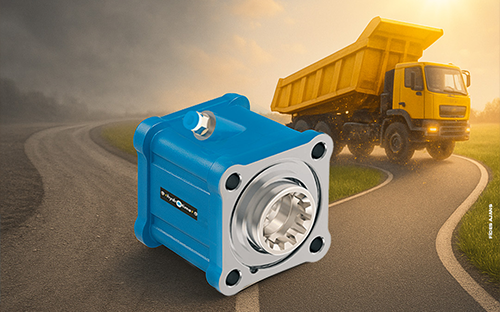
In heavy-duty vehicles and industrial machinery, the Power Take Off (PTO) is one of the most important components. Commonly referred to as an auxiliary gearbox or power output unit, a PTO transfers power from the vehicle’s engine or transmission to auxiliary equipment such as hydraulic pumps, winches, cranes, or tipping systems.
So, what exactly is a PTO, how does it work, where is it used, and what determines PTO prices? Let’s take a closer look.
A PTO transfers mechanical energy from the engine or transmission and delivers it to external equipment. When engaged, the PTO uses a shaft or gear system to transmit engine power directly to pumps or other hydraulic systems.
For example, in a tipper truck, the PTO sends power to the hydraulic pump, which then raises the truck bed. In the same way, fire trucks, recovery vehicles, agricultural machinery, and sweepers rely on PTOs for their auxiliary operations.
The applications of PTOs are broad and include:
Tipper trucks and trailers – for lifting and unloading systems.
Cranes and recovery trucks – to power hydraulic arms and winches.
Agricultural machinery – tractors, balers, harvesters, and other farm equipment.
Fire trucks – to operate water pumps.
Street sweepers and cleaning vehicles – to run brushes and vacuum systems.
Industrial machinery – hydraulic presses and specialized equipment.
Essentially, PTOs allow a vehicle to do much more than just move—they provide the power for critical auxiliary functions.
Depending on the vehicle and application, there are several types of PTOs:
Mechanical PTOs – engaged manually by a lever or switch.
Pneumatic PTOs – controlled via air pressure.
Hydraulic PTOs – ideal for applications requiring high torque.
Manufacturers like Hydrotime design PTO systems compatible with various brands and vehicle models.
PTO prices vary based on several factors:
Vehicle model and gearbox type
Torque and power capacity
PTO type (mechanical, pneumatic, or hydraulic)
Brand, build quality, and warranty
Local production vs. imported systems
While smaller PTOs for light commercial vehicles are more affordable, heavy-duty PTOs with high torque capacity are priced higher. However, cost should not be the only consideration—compatibility, durability, and technical support are equally important.
When buying a Power Take Off (PTO), you should pay attention to:
Compatibility with the vehicle’s model and transmission
Required torque and power levels
Intended application (tipper, crane, agricultural equipment, etc.)
Availability of spare parts and service support
Quality certifications and warranty coverage
The right PTO not only improves vehicle performance but also ensures long-term reliability.
In summary, the Power Take Off (PTO) is a key mechanism that transfers engine power to auxiliary systems, enabling vehicles to perform multiple functions. From tipper trucks and cranes to fire trucks and tractors, PTOs are essential for efficiency, safety, and productivity.
Hydrotime offers high-quality PTO systems designed for a wide range of vehicles, meeting both domestic and international standards.
Choosing the right PTO enhances performance, reduces operating costs, and ensures long-term system durability.